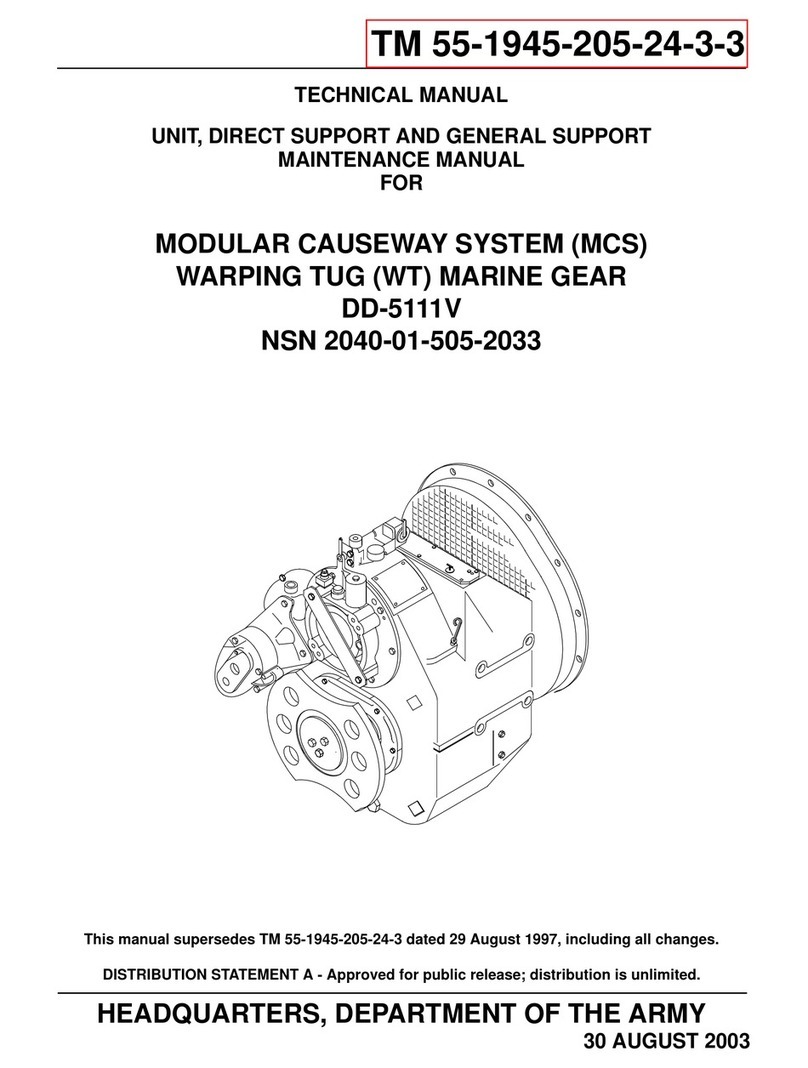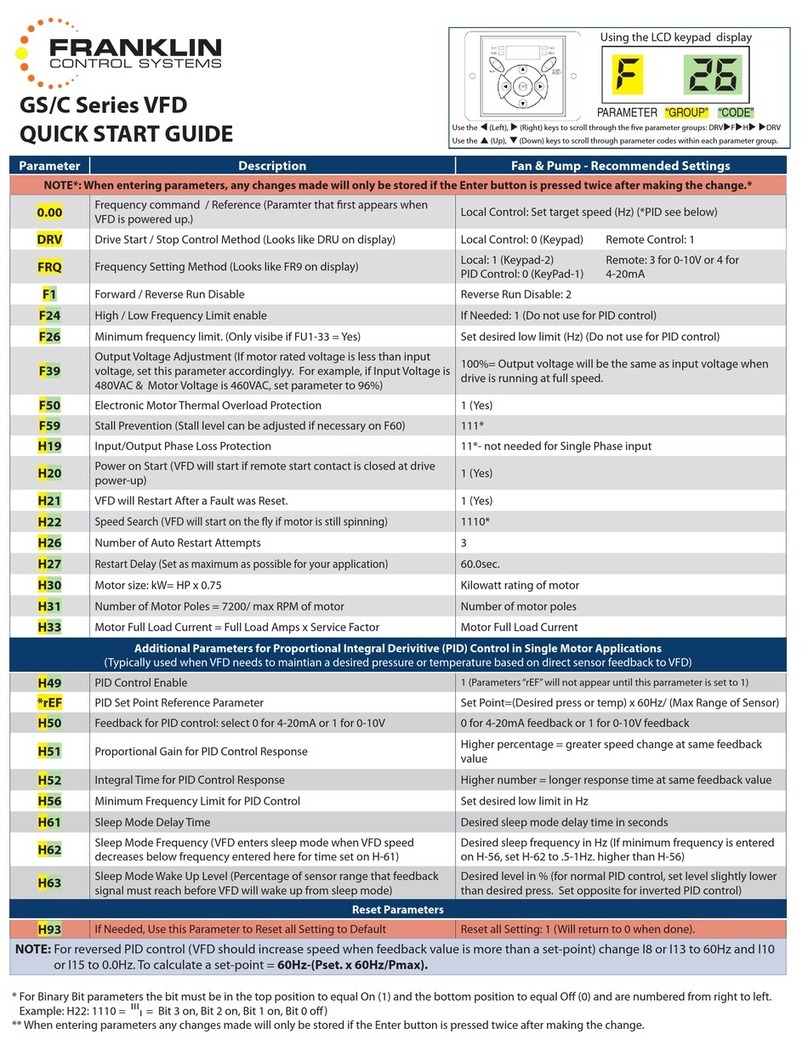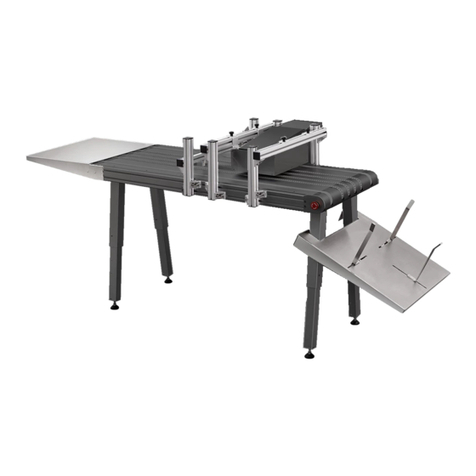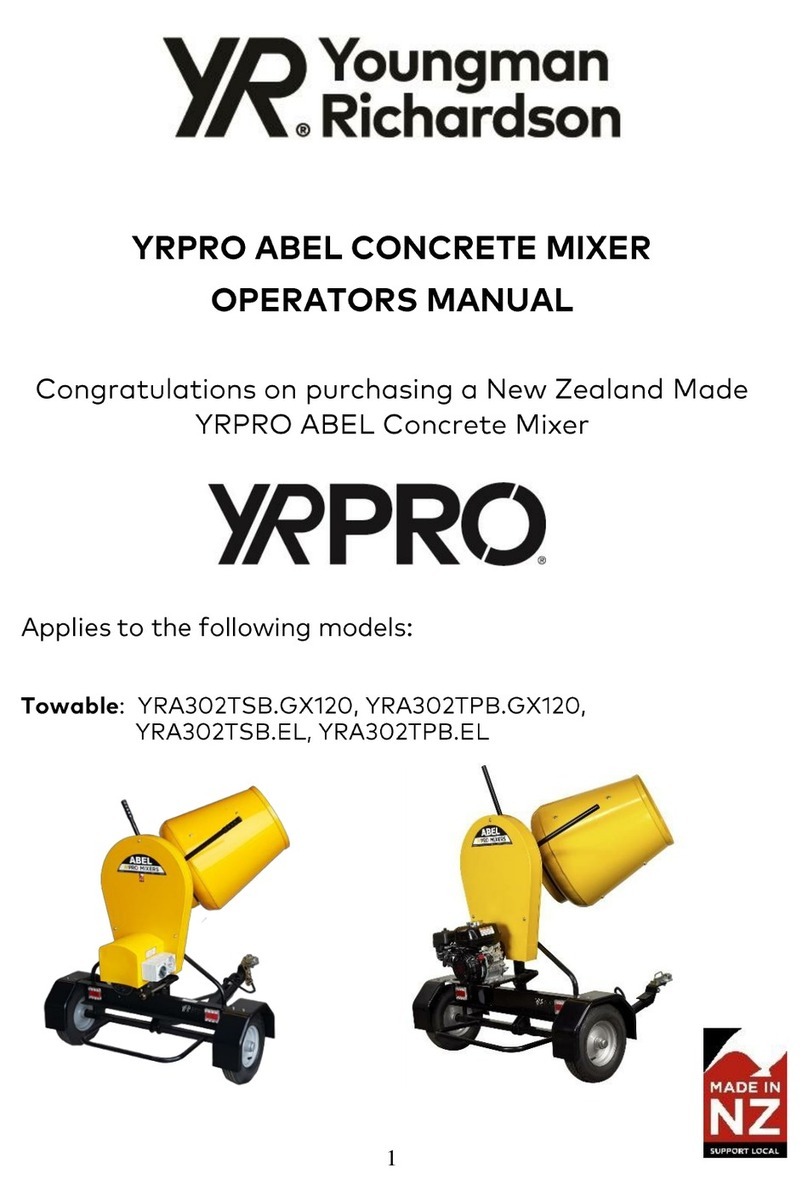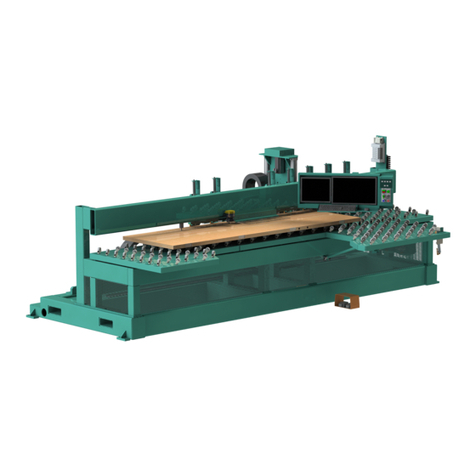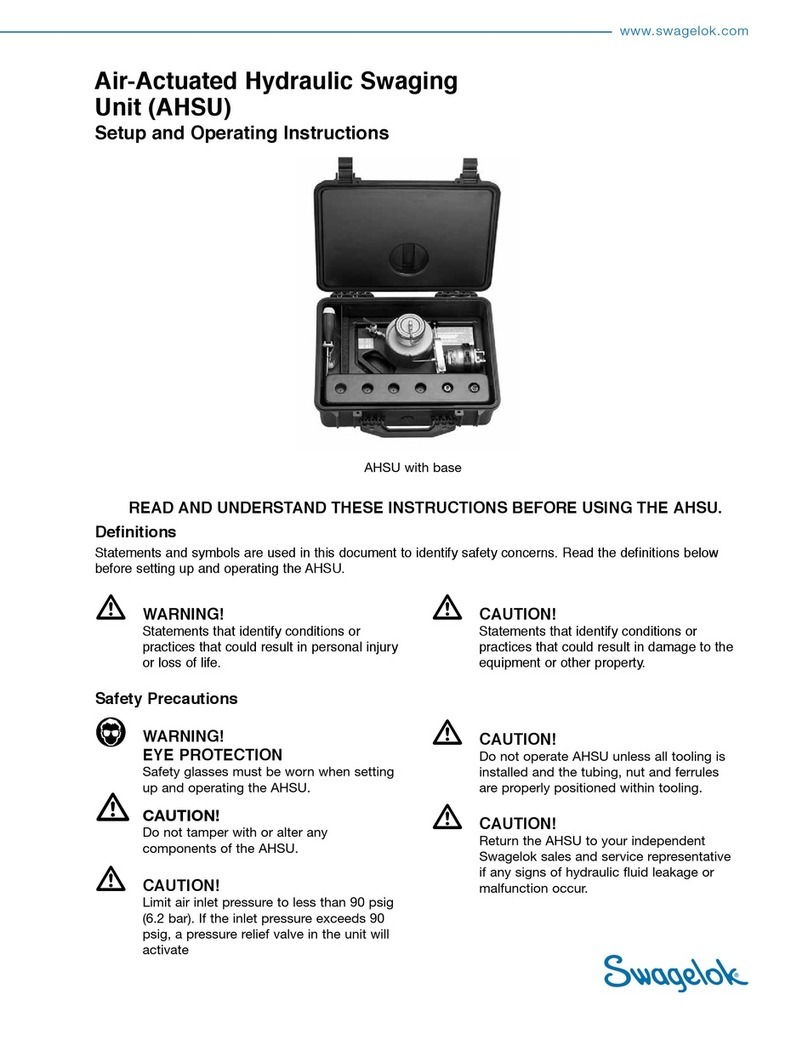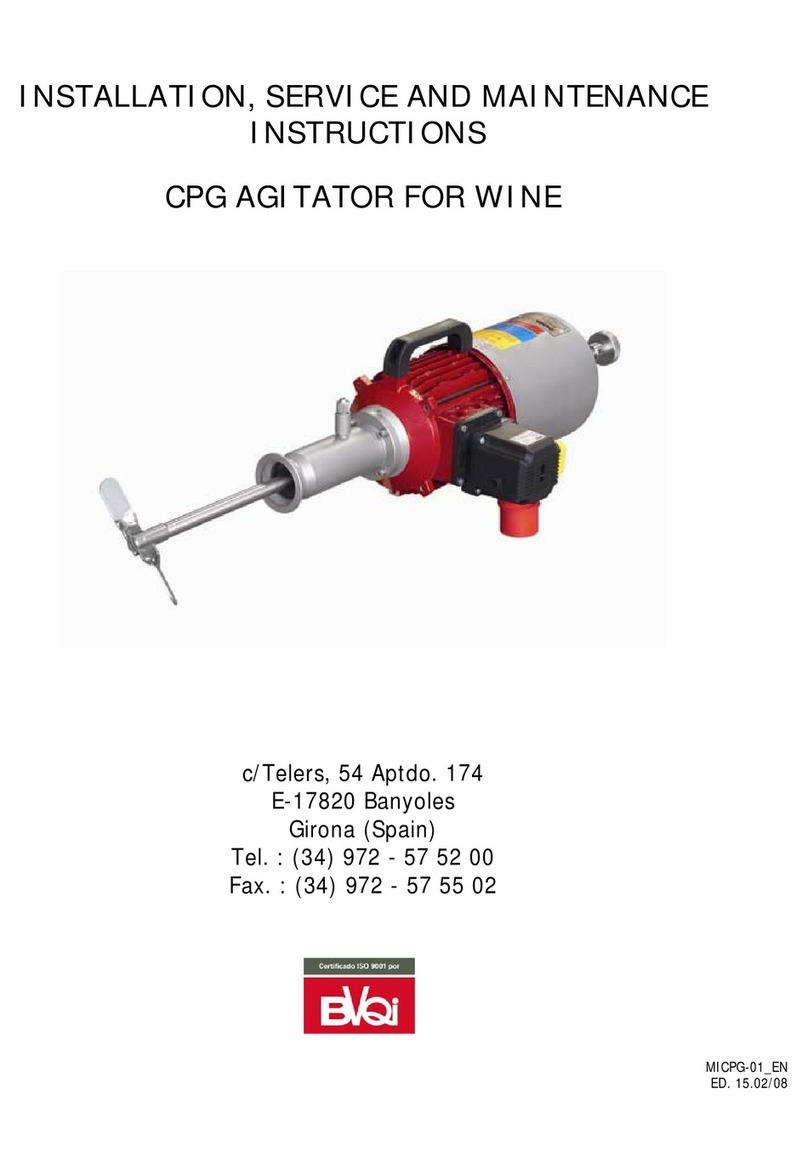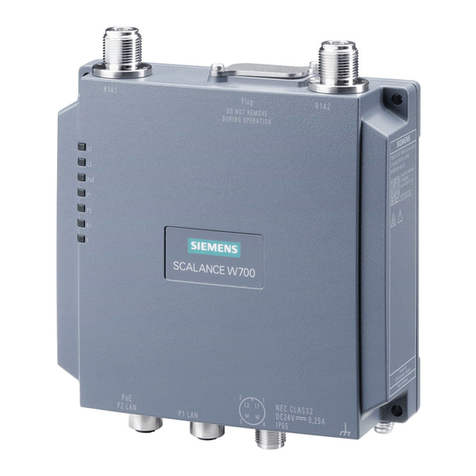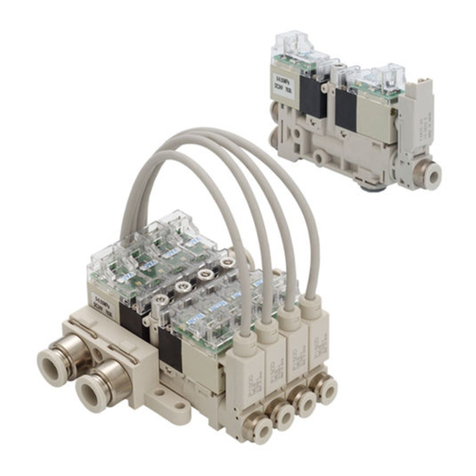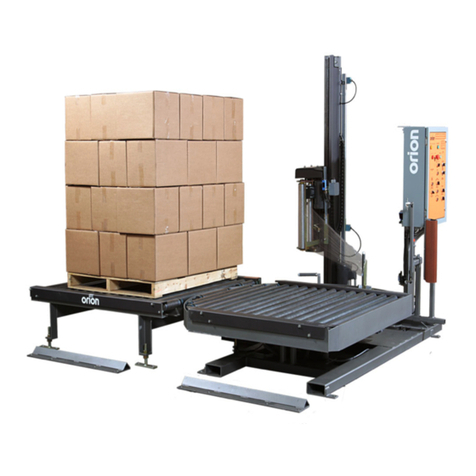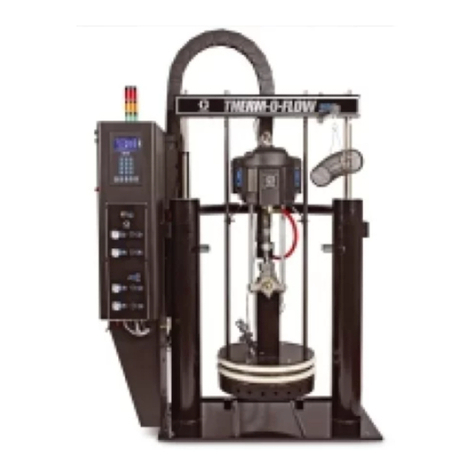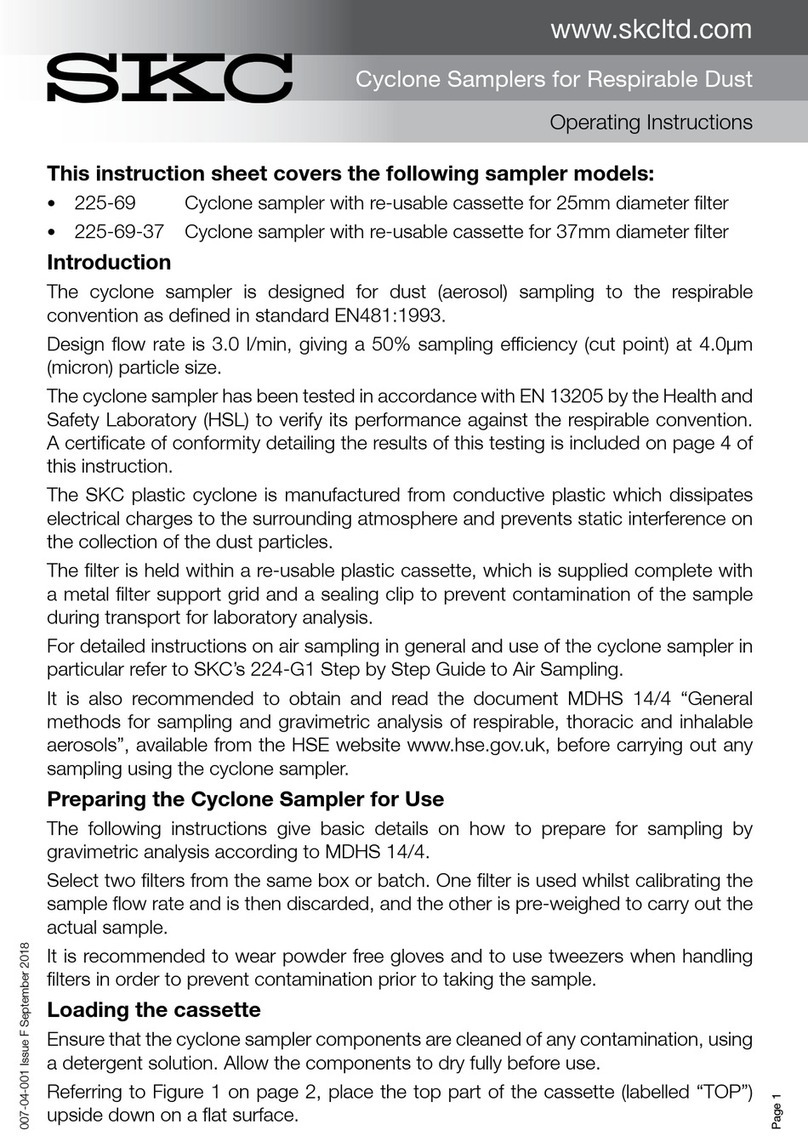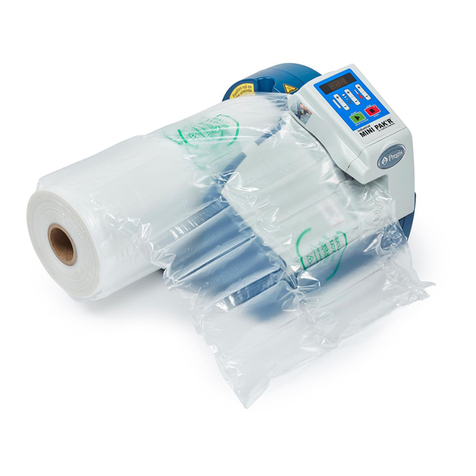AULARI ALR400-KZ User manual

2

3
WARRANTY
Terms and conditions
In this document, “the Company” refers to Industrie Aulari Inc.
1) New applicators manufactured by the Company, free of manufacturing defects (labor and parts) are
warranted for one (1) season of use from the date of delivery.
2) If the applicator or components thereof does not meet the terms of warranty presented in clause 1, the
Company must solve the problem and put the applicator in operation conditions, at his option:
a) Repair defective parts or components;
b) Replace parts or defective components with new parts.
3) This warranty releases the Company from any liability for loss of profit or other consequences resulting
from a defect of the applicator.
4) All warranty claims must be written to the Company within 14 days of the defect, only these written
claims will be considered by the Company.
5) All warranty claims must be made by the original purchaser of the applicator.
6) The warranty will become void if:
a) Parts which are not manufactured by, provided by or approved by the Company are installed and
used on the applicator;
b) Repairs, non-approved by the company, are made on the applicator;
c) Custom modification on the applicator are made without the written approval of the Company;
d) The applicator is damaged in an accident;
e) The applicator is misused, overloaded or used for any application other than seeding and
fertilization. Specifications and capacities in this manual represent the acceptable limits for the use of
the applicator (refer to the Specifications section of this manual);
f) The maintenance is not done according to the recommendations and intervals specified in this
manual.

4

5
PRODUCT IDENTIFICATION
Please complete the information below upon receipt of your applicator. Accurately record all the numbers to
help in tracing the machine should it be stolen. Your dealer also needs these numbers when you order
parts. Also file this information in a secure place off the machine.
Serial number
Model
Number of rows
Year of manufacture
Delivery date
Date of first use
Accessories included
Dealer information (if applicable)
Name
Address
City/ Province/ Country
Phone
Fax
Email
Manufacturer information
Industrie AULARI Inc.
620 St-Roch, St-Barnabe Sud
(Quebec) Canada J0H 1G0
Phone : 450 792-2126
Toll free : 1-877-892-2126 (only North America)
Fax : 450 792-2127
www.aulari.com

6

7
CONTENTS
WARRANTY
3
PRODUCT IDENTIFICATION
5
INTRODUCTION
8
SAFETY
9
SAFETY SYMBOLS ON THE APPLICATOR
9
TRANSPORTING
11
ACCIDENT PREVENTION
11
TECHNICAL DATA –ALR400-KZ
12
START-UP PROCEDURE IN FIELD
13
START-UP OF THE APPLICATOR
14
CALIBRATION PROCEDURE
15
SERVICE ON THE APPLICATOR
16
Practice safe maintenance
16
Cleaning of the applicator
16
Service/Prior to operation every season
17
Storage and service at the end of season
17
Lubricants and capacities
17
Variable transmission oil
17
Oil reservoir
18
Drive arm adjustment
18
TABLE OF LUBRICATION (GREASE)
19
TABLE OF LUBRICATION (OIL)
20
OTHER MAINTENANCE
20

8
INTRODUCTION
This operator manual contains all the information needed to make the adjustment and maintenance on your
Aulari pneumatic precision applicator.
This manual should be considered as a permanent part of your machine and should remain with the machine
when you sell it.
Please read this manual before using the applicator and be sure to follow the operating and maintenance
instructions. Also, make sure that all operators of the applicator have read this operating manual. So, this way,
you can prevent accidents, reduce repair costs and downtime. In addition, you will increase the productivity
and longevity of your applicator. Always comply with all safety instructions present in this manual!
Industrie Aulari Inc. will not accept liability for any damage or consequence resulting from non-respect with
the guidelines in this operator's manual.
The operating instructions will guide you for a better control of your machine and will guide you to make better
use and optimal maintenance.
The operator manual must be read by anyone who works with this applicator, whether for:
the operation of the applicator (adjustments in the field)
daily or seasonal maintenance
The period of warranty coverage begins upon delivery of the distributor. A representative of the Company or
the dealer will provide the adjustment instructions, maintenance and security for the first using of the
applicator.
Industrie Aulari inc. reserves the right to modify technical data and illustrations in this document in order to
improve the product.

9
SAFETY
Carefully read all safety messages in this manual
and on your machine safety signs. Keep safety
signs in good conditions. Replace missing or
damaged safety signs. Be sure new equipment
components and repair parts include the current
safety signs. Replacement safety signs are
available from your dealer or manufacturer.
The following hazard and safety symbols are
present in this manual and on your applicator.
A signal word - DANGER identifies the most
serious hazards which can result in serious
physical injury or death.
A signal word - WARNING indicates a potentially
hazardous situation (e.g. security guard removed
or unsafe practices) that can result in serious
physical injury or death.
A signal word - CAUTION indicates a potentially
hazardous situation, unsafe practice which could
result in minor or moderate injury.
The safety decals on the applicator should never
be hidden or damaged. For replacement stickers,
contact Industry Aulari.
SAFETY SYMBOL ON THE
APPLICATOR
Read the operator andmaintenance
manual before using the applicator.
Use anchor points identified on the
applicator for securing the carriage.
Beware of under pressure escaping
fluid. Always release the pressure
from hydraulic lines before making
repairs.
No passenger allowed on the
applicator when in operation.

10
Keep your hand off the chain drives
when in operation.
Never use belt drive without the
security guard in place. Before
adjusting or repairing the applicator,
disengage the PTO and stop the
tractor.
Never use the PTO without the
security guard in place. Before
adjusting or repairing the applicator,
disengage the PTO and stop the
tractor.
Do not stand under the step when
lower down.
Never get in the hopper when the
applicator is in operation
This is a safety-alert symbol. When
you see this symbol on your
applicator or in this manual, be alert
to the potential for personal injury.
Follow recommended precautions
and safe operating practices.

11
TRANSPORTING
Transport safety
When it is necessary to travel on
public roads, it is important to
always follow the road safety rules
in force.
Always use headlights, flashing warning
lights, day and night, when transporting on
a public roadway. Keep lighting and
marking clean and visible to operators and
other vehicles.
Replace or repair any defective lighting or
marking that has been damaged or lost.
Never pull the planter on the road with a
hopper filled more than 50% of its capacity.
In regards to warning lamps, maximum
permissible transport widths and weights,
check local governmental regulations.
Serious injury or death can result from
contact with electric lines. Use care when
moving or operating this applicator near
electric lines to avoid contact.
ACCIDENT PREVENTION
In addition to all the instructions, it is necessary to
take special precautions to prevent accidents.
During service
Understand service procedure before doing
work. Keep area clean and dry.
Never lubricate, service, or adjust machine
while it is moving. Keep hands, feet, and
clothing from power-driven parts.
Disengage all power and operate controls
to relieve pressure. Lower equipment to the
ground. Stop engine. Remove the key.
Allow machine to cool.
Securely support any machine elements
that must be raised for service work.
To avoid the risk of falling, never climb on
rotatable parts (discs, gauge wheels, etc.).
Observe the maintenance intervals
specified in this operator's manual.
Hydraulic system
Relieve pressure before disconnecting
hydraulic or other lines. Tighten all
connections before applying pressure.
The hydraulic system of the applicator
operates at high pressure. To prevent
incidents search for leaks with a piece of
cardboard. Protect hands and body from
high pressure fluids.
Hydraulic hoses can fail due to physical
damage, kinks, age and exposure. Check
hoses regularly. Replace damaged hoses.
To protect the operator and
the other person which have
to move around the
applicator, always lower
equipmenttothe ground and
put the safety lock provided.
During operation
Before starting, make sure that nobody is
near the planter.
All protective devices (guards and shields)
must be in place at all times during the use
of the applicator.
Nobody should get into the hopper during
operation of the applicator. It could cause
suffocation.

12
TECHNICAL DATA –ALR400-KZ
Working width *
12 rows at 70 cm / 8.4 m / 27.5 ft
16 rows at 70 cm / 11.2 m / 36 ft
Dimensions
Total empty weight 525 Kg / 1157 lbs

13
START-UP PROCEDURE
(IN FIELD)
Carefully take the time to follow all instructions listed in this section in order to benefit from optimal
performance from your applicator.
1. Adjust the speed of transmission of the distribution system. Use crank [Figure 1, A] for adjusting the
indicator rule to the desired position.
2. The optimum operating zone of the variable transmission is between 3 and 18 on the indicator rule
[Figure 1A].
Refer to CALIBRATION PROCEDURE section for the calibration procedure of the applicator.
Figure 1
Figure 1A
3. Before initial filling of the hopper, you must ensure that hopper screens are install in the hopper and
that no objects or debris are on hopper screen.
A

14
START-UP OF THE
APPLICATOR
Once all of the adjustments in the field were made,
the applicator is ready for use.
1. Start-up the tractor.
2. Activate the fan corresponding hydraulic
outlets. If the fan doesn’t start, refer to
“ATTACHING PROCEDURE” in this
manual.
3. Reduce the oil flow rate to he minimum, and
then gradually increase the flow rate to
reach the recommended operating speeds
listed below
Always turn the fan with the minimum
required oil in the fan motor to prevent
overheating of the tractor hydraulics.
Immediately repairany oil leaks; the
high pressure could cause injury!
Repair any damaged hoses and
fittings with original parts.
4. Lower down planter to the ground.
Always make sure there is enough
space around the planter to
perform various operations.
5. Start planting, the pressure indicated on the
pressure gauge [Figure 2] should be
between 23 and 28 inch of water.
Figure 2
6. Always make sure there is no blockage or
obstruction in the fertilizer distribution
system.
7. Stop to verify the depth of the
fertilizer and its positioning relative
to the seed.
8. Make regular visual inspection of the
distribution system, metering shaft and air
box. Clean the metering roll splines, if
necessary, with the scraper designed for
this purpose [Figure 3].
Figure 3
Always keep hopper screens in
place for a good functioning of the
distribution system.

15
41 cm
1. A.) Open all shut off gates underneath one (1) hopper and remove the panel.
A. B.
C.
2. Turn the fertilizer contact wheel constantly for
12 full rotation
33 full rotation
3.
4.
of your working width:
8,400
(12 row)
11,200
(16 row)
154 116
27,559 (12row) 36,745
(16 row)
62 46
5.
Working width (feet)
Factor lb/acre
Adjust the transmission and if necessary repeat steps 2 to 5.
Make sure that your scale is in kg.
If you are using lb/acre,
Make sure that your scale is in lb.
Multiply the weight of the fertilizer by the calibration factor depending
Working width (meter)
Factor kg/Ha
If you are using kg/ha,
C.) Then close all the sections shut off gates on the other hopper.
Or use the hand crank and turn for
Calibration Procedure Europe Kinze 3600
Weight the amount of fertilizer collected in the pan:
Contact wheel diameter:
(Tire 4.00-8)
B.) Install the funnel and a pan under the meetering shaft.

16
SERVICE ON THE APPLICATOR
Always follow the warning sign
and maintenance instruction
applicable to the applicator.
The applicator was quality control at the factory. It
is warranted to be free from defects and technical
service.
However, to ensure efficient use without failure and
/ or premature wear, it is imperative to strictly follow
maintenance procedures; maintenance and
cleaning are included in this manual, and that, at
recommended intervals.
Practice Safe Maintenance
Understand service procedure before
doing work. Keep area clean and dry.
Never lubricate, service, or adjust machine
while it is moving. Keep hand, feet, and
clothing from power-driven parts.
Disengage all power and operate controls
to relieve pressure. Lower equipment to
the ground. Stop the engine. Remove the
key. Allow machine to cool.
Securely support any machine elements
that must be raised for service work.
Keep all parts in good condition and
properly installed. Fix damage
immediately. Replace worn or broken
parts. Remove any build-up of grease, oil,
or debris.
Disconnect wiring harnesses from tractor
before servicing electrical system
components or welding on machine.
Cleaning of the applicator
We recommend a deep cleaning of the hopper to
maximize its lifetime.
Perform high pressure cleaning work regularly,
either after the spring and/or subsequent use. Do
not leave deposits of fertilizers accumulate at the
bottom of the distribution system and/or the frame
of the applicator.
For ease of maintenance, open the stainless steel
manifold, allowing you to clean inside. Be careful
not to move the plastic caps inside the box [figure
4, A].
Figure 4
Keep the flutes of the metering roller clean of
residue during use [Figure 4B]. The accumulation
of fertilizer on the flutes will effectively reduce the
amount of fertilizer applied to the field. Use scraper
provides for this purpose for maintenance [Figure
3].
A

17
Figure 4B
Service/Prior to operation every season
Make a complete inspection of the applicator each
beginning of season. Clean dirt and grease
accumulated on the moving parts, gears and
chains; this will prevent the abrasive action of the
dust.
Storage and service at the end of season
When the season of use is over, completely clean
the applicator to remove residual fertilizer, dirt and
debris that hold moisture and cause rust.
Lubricate grease points as explained in the
LUBRICATION section.
Check that there isn’t any missing, damaged or
worn part. Consult your dealer to obtain the wear
parts and/or other replacement parts.
Lubricants and capacities
To make lubrication on the applicator, use
multipurpose grease EP2.
The variable transmission [Figure 5] which
drives the distribution system uses clear
trans-hydraulic oil. Capacity: 1.75 liters.
The oil reservoir [Figure 5A] of the metering
drive system uses Dextron III oil. Capacity
8 liters.
Pay special attention to the fan
bearings. A failure thereof may
cause a major breakdown of the
components of the fan.
Attention: An excess of grease in the
bearing can cause damage to the seal.
Variable transmission oil
Change the oil in the variable transmission at the
beginning of each planting season or application.
The temperature changes during the offseason can
cause condensation on insides of the transmission,
thus reducing the efficiency of the lubrication.
To drain the oil; remove the drain plug [Figure 5, A]
at the bottom of the transmission housing. To
facilitate the flow, remove the filler plug [Figure 5,
B]. Reinstall the drain plug and fill the transmission
with clear trans-hydraulic oil to recommended
level. A window indicates the oil level [Figure 5, C].
Check the oil level every day, fill as needed.
Figure 5
A
B
C
B

18
Oil reservoir (Distribution)
Change the oil and filter from the small tank [Figure
5A] of the distribution system at the beginning of
each planting season or application. The
temperature changes during the offseason and can
cause condensation insides of the transmission,
thus reducing the efficiency of the lubrication.
To drain the oil, remove the drain plug [Figure
5A, A] at the bottom of the tank. To facilitate the
flow, remove the filler cap [Figure 5A, B] and filter
[Figure 5A, C]. Reinstall the drain plug and a new
filter, then fill the tank with Dextron III oil to the
recommended level, approximately 8 liters. A
window indicates the oil level [Figure 5A, D]. Check
the oil level every day, fill as needed.
Figure 5A
Pay special attention to the fan
bearings. A failure thereof may
cause a major breakdown of the
components of the fan.
Attention : An excess of grease in the bearing can
cause damage to the seal.
Contact Wheel
These applicators are equipped with a drive arm
with an inner chain [Figure 6, A]. The stainless
steel chain can be adjusted. Simply rotate the
plastic tensioner on itself to reach the ideal tension.
Do not over tighten the chains. Excessive
tension will cause a premature wear and
stretching of the chains.
Figure 6
A
A
C
B
D

19
TABLE OF LUBRICATION (GREASE)
Zone
Lubrication zone
Number of grease
fitting
Interval
1
Distribution system drive
5 (10 total)
100 hours
Use EP2 universal grease
Attention: An excess of grease in the bearings can cause damage to the seal.
ZONE 1
Mechanical transmission side
PTO link side

20
TABLE OF LUBRICATION (OIL)
Lubrication parts
Lubricant type
Quantity
Interval
Variable transmission
[figure 23]
Clear trans-hydraulic oil.
1.75 liters
Once per season
Check level daily
Oil reservoir (Distribution
system) [figure 23A]
Dextron III oil
8 liters
Once per season
Check level daily
OTHER MAINTENANCE
Other maintenance or verification
Interval
Chains tension
Daily
Emptying of the water that accumulates in the fan
Beginning of season
Table of contents

